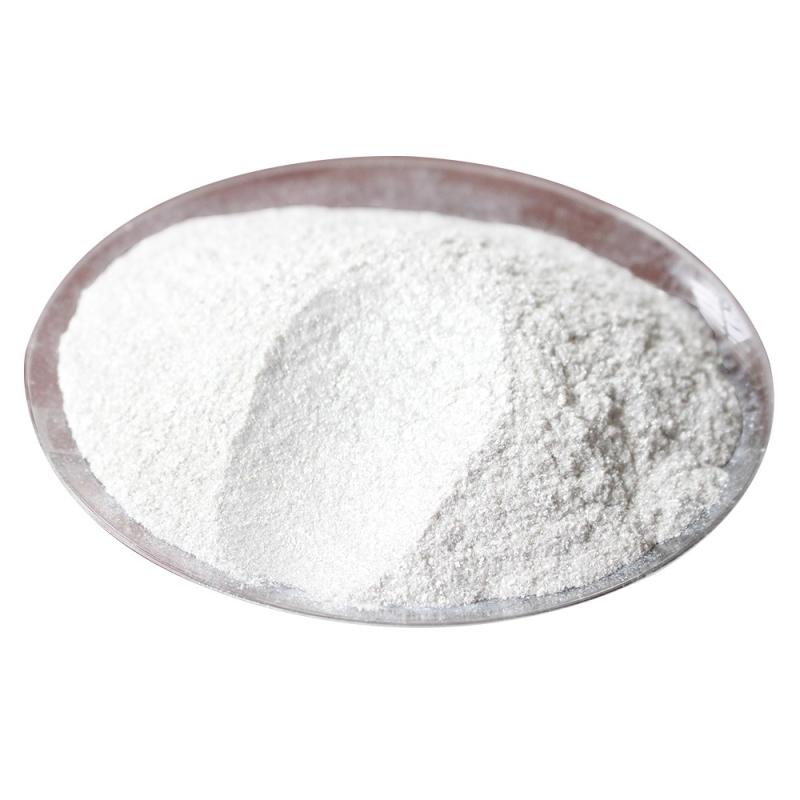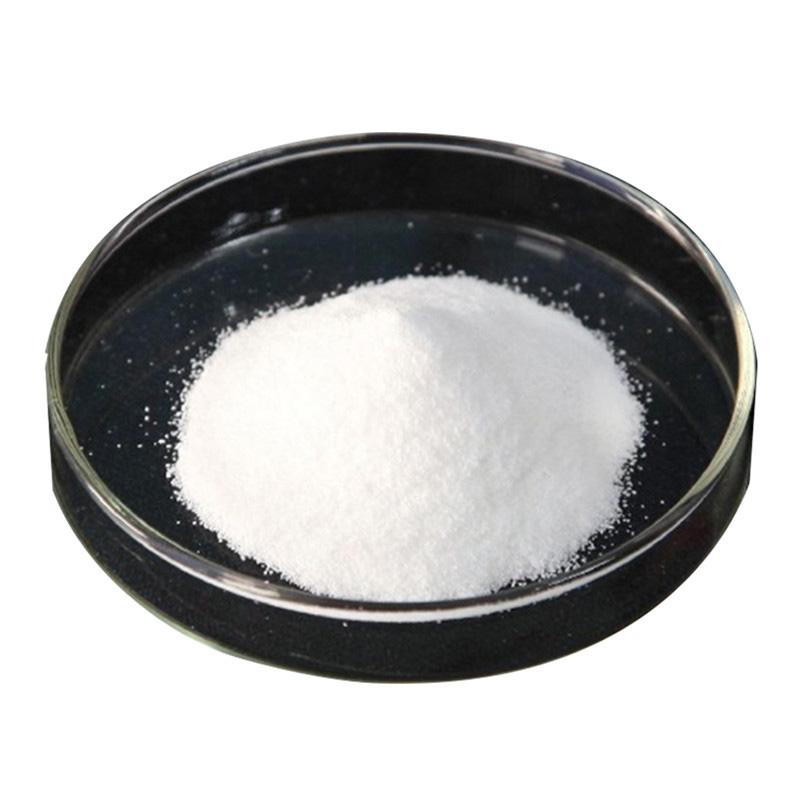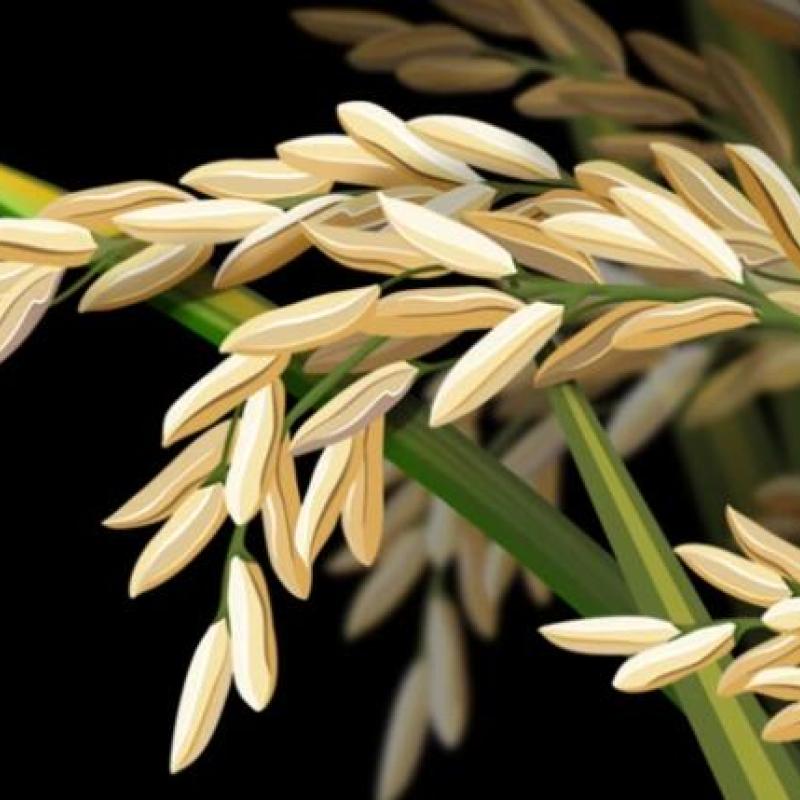Product Description:Pymetrozine is a non - cellular insecticide belonging to pyridinethimide or triazinone pesticide. Pymetrozine has tactile and endogenic activity to pests. In vegetation, it may be transported in every xylem and phloem. Therefore, it can be used as a foliar spray and soil remediation agent. Due to its correct transfer properties, newly grown branches can also be effectively covered after spraying stems and leaves.Common name: PymetrozineChemical name: (E)-4,5-Fihydro-6-methyl-4-((3-pyridinylmethylene)amino)-1,2,4-triazin-3(2H)-oneMolecular form
Contact Now
Common name: PymetrozineChemical name: (E)-4,5-Fihydro-6-methyl-4-((3-pyridinylmethylene)amino)-1,2,4-triazin-3(2H)-oneMolecular formula: C10H11N5OStructural formula:Molecular weight: 217.23CAS No. : 123312-89-0Product description:Pymetrozine belongs to the pyridine (pyridinethimide) or triazinone class of insecticides and is a non - cytocytic insecticide. Pymetrozine has a tactile effect on insect pests and internal absorption activity. In plants, it can transport in both xylem and phloem. Therefore, it can be used as foliar spray and soil treatment.
Contact Now
usage:Amide selective, pre-emergence herbicide, can be applied to corn, cotton, soybean, peanut, rape, potato, sugarcane, sesame, sunflower and legume, cruciferous, nightshade, compositae, umbelliferae, etc. Control annual grass weeds in vegetable fields and orchards, and a single application keeps crops free from weed damage throughout the growing period. Not effective against perennial weeds.Common name: AcetochlorChemical name: 2-chloro-N-(ethoxymethyl)-N-(2-ethyl-6-methylphenyl)acetamideMolecular formula: C14H20ClNO2Structural formula:Molecular weight: 269.77CAS No.
Contact Now
It is moderately toxic to humans and animals, has no irritating effect on rabbit skin, has mild irritating effect on eyes, and is highly toxic to aquatic organisms, bees and silkworms. High insecticidal activity, is a nerve agent, pyrethroid insecticides. It is mainly used for contact killing and stomach poisoning, and has a certain repelling effect, without systemic suction and fumigation. Binding effect, long lasting effect, able to withstand rainwater leaching.
Contact Now
Physical and chemical properties:The pure product is colorless crystal and has no smell. m.p.155~156℃, relative density 1.29. easily soluble in benzene, chloroform (230g/l), acetone (80g/l, carbon disulfide and other chemicalbook organic solvents, barely soluble in ether and ethanol (<10g/l), insoluble in water (30mg/l). decomposes in acid.
Contact Now
Common name: TriclopyrChemical name: [(3,5,6-trichloropyridin-2-yl)oxy]acetic acidMolecular formula: C7H4Cl3NO3Structural formula:Molecular weight: 256.47CAS No. : 55335-06-3Physical and chemical properties:The pure product is a white crystalline solid. m.p.148~150℃, decomposition temperature 290℃. The vapor pressure is 1.68×10-4Pa. It is soluble in organic solvents such as ethanol, and its solubility in water at 25°C is 430~440mg/L.
Contact Now
Usage:Chlorpyrifos is used in approximately one hundred nations round the world to manipulate insects in agricultural, residential, and business settings. its use in residential packages is limited in more than one international locations. in step with dow, chlorpyrifos is registered for use in nearly one hundred nations and is yearly carried out to approximately eight.five million crop acres. the crops with the maximum use consist of cotton, corn, almonds, and fruit trees, consisting of oranges, bananas, and apples.
Contact Now
Product description:Lufenuron is the active factor inside the veterinary flea manage remedy application, and one of the energetic elements in the flea, heartworm, ringworm and anthelmintic medicine milbemycin oxime/lufenuron (sentinel).Lufenuron is stored within the animal's body fats and transferred to adult fleas via the host's blood when they feed. adult fleas switch it to their growing eggs via their blood, and to hatched larvae feeding on their excrement.
Contact Now
Common name: AcetochlorChemical name: 2-chloro-N-(ethoxymethyl)-N-(2-ethyl-6-methylphenyl)acetamideMolecular formula: C14H20ClNO2Structural formula:Molecular weight: 269.77CAS No. : 34256-82-1Physical and chemical properties:Light brown liquid. b.p.>200℃, m.p.>0℃, vapor pressure 133.3Pa, relative density 1.11 (30℃).
Contact Now
Product description:Propolachlor, also referred to as saufort, is mainly used for directly sown rice fields. it has the traits of secure rice boom, extensive weed control spectrum and proper weed manage impact. it could essentially manipulate the damage of weeds in the whole boom length.
Contact Now
Common name: ButachlorChemical name:N-(butoxymethyl)-2-chloro-2',6'-diethylacetanilideMolecular formula: C17H26ClNO2Structural formula:Molecular weight: 311.85CAS No. : 23184-66-9Product description:Butachlor is a kind of amide systemic and conductive selective preemergence herbicide, also known as norlachlor, machete, and mediachlor. The pure product is a light yellow oily liquid with a slight aromatic smell. It is hardly soluble in water and easily soluble in many organic solvents. It is chemically stable under normal temperature and neutral and weak alkaline conditions.
Contact Now
AzaconazoleChemical name:1-[[2-(2,4-dichlorophenyl)-1,3-dioxolan-2-yl]methyl]-1,2,4-triazole Molecular formula: C12H11Cl2N3O2Structural formula:Molecular weight: 300.1406CAS No. : 60207-31-0Physical and chemical properties:Density: 1.51 g/cm3Melting point: DHS 112.6 CBoiling point: 460.7ºC at 760 mmHgFlash: DHS 232.4 CRefractive index: 1.658Storage conditions: 0-6ºC
Contact Now
Common name: ClethodimChemical name: (5RS)-2-[(1EZ)-1-[(2E)-3-chloroallyloxyimino]propyl]-5-[(2RS)-2-(ethylthio)propyl]-3-hydroxycyclohex-2-en-1-oneMolecular formula: C17H26ClNO3SStructural formula: Molecular weight: 359.91CAS No. : 99129-21-2Physical and chemical properties: The original medicine is amber transparent liquid.
Contact Now
MF: C22H17N3O5MW: 403.39CAS: 131860-33-8 Physical and chemical properties:Density: 1.33 g/cm3Melting point: 118-119 ℃Boiling point: 581.3 ℃Flash: 305.3 ℃Appearance: white crystalline powderUsage :because of its prevention and cure of bacteria ester disease range is wide, suitable for wheat, corn, rice and other food crops, peanut, sesame, tobacco, cotton and other economic crops, tomato, watermelon, cucumber, eggplant, chili, vegetable crops, such as apple, pear, kiwi fruit, mango, litchi, longan, banana and other fruit trees, medicinal herbs, flowers, such as hundreds of crops.Its e
Contact Now
Common name: AtrazineChemical name:2-Chloro-4-ethylamino-6-isopropylamino-1,3,5-triazine; 2-chloro-4-ethylamino-6-isopropylamino-s-triazine; Molecular formula: C8H14ClN5Structural formula:Molecular weight: 215.68CAS No. : 1912-24-9Physical and chemical properties:Atrazine is a colorless crystal with a melting point of 173~175°C. Dissolved in water, methanol and chloroform. It is stable in neutral, slightly acidic and slightly alkaline media, but alkali and inorganic acid can hydrolyze it into hydroxy derivatives without herbicidal activity at high temperature, and it is non-corrosive.
Contact Now
Product description:Prochloraz, also referred to as promethazine, promethazine, shibaoke, and prochloraz, is an imidazole enormous-spectrum pesticide fungicide, which acts via inhibiting the biosynthesis of sterols. even though it does not have a systemic effect, it has sure conductivity residences. it has apparent control impact on diverse plant life because of ascomycetes and semi-chemicalbook micro organism. it may moreover be mixed with most fungicides, insecticides, and herbicides, and has appropriate manage consequences.
Contact Now
Common name: MCPAChemical name: (4-chloro-2-methylphenoxy)acetic acidMolecular formula: C9H9ClO3Structural formula: Molecular weight: 200.62CAS No. : 94-74-6Physical and chemical properties:The pure product is a white crystalline solid. m.p.118~119℃(120℃), solubility: ether 77g/100mL, ethanol 153g/100mL, n-hexane 0.5g/100mL, toluene 6.2g/100mL, xylene 4.9g/100mL, water 0.0825g/100mL. Industrial products m.p.99~107℃, smell of phenol.Usage:Hormone-based selective herbicides are easily absorbed and conducted by roots and leaves.
Contact Now
Product description:Pendimethalin is an herbicide of the dinitroaniline magnificence used in premergence and postemergence programs to manipulate annual grasses and sure broadleaf weeds. it inhibits mobile department and cellular elongation.
Contact Now
Common name: 2,4-DChemical name:2,4-dichlorophenoxy-acetic acid; (2,4-dichlorophenoxy)acetic acid; Acetic acid, 2-(2,4-dichlorophenoxy)-Molecular formula: C8H6Cl2O3Structural formula: Molecular weight: 221.04CAS No. : 94-75-7Physical and chemical properties:White crystals. Melting point is 138°C, boiling point is 160°C (53Pa). Soluble in organic solvents such as ethanol, acetone, ether and benzene, but insoluble in water. Rat oral LD50375mg/kg.Usage:Used as plant growth regulator, antiseptic and fresh-keeping agent. It can be used in compatibility with other disinfectants.
Contact Now
Common name: GlufosinateChemical name: 2-Amino-4-[hydroxy(methylphosphonoyl)]butanoic acidMolecular formula: C5H18N3O4PStructural formula:Molecular weight: 215.19CAS No. : 77182-82-2Product description:Glufosinate-ammonium, also known as glufosinate, is a non-selective foliar spray of organophosphorus herbicide. It was first synthesized and developed by the Federal German Hoechst Chemical Company in 1979.
Contact Now
Common name: Metsulfuron-MethylChemical name: 2-(4-methoxy-6-methyl-1,3,5-triazin-2-ylcarbamoylsulfamoyl) benzoic acidMolecular formula: C14H15N5O6SStructural formula:Molecular weight: 381.36CAS No. : 74223-64-6Product description:Metsulfuron is an ultra-low dosage sulfonylurea herbicide for controlling medium-broad-leaved weeds in cereals. It can be transferred upward and downward in the plant body and used as a herbicide before and after wheat sprouts.Physical and chemical properties:The pure product is a white crystalline solid. m.p.158℃(163~166℃), vapor pressure 3.3×10-10Pa(25℃).
Contact Now
Common name: MethomylChemical name:Methylthio-1-ethylidenamino methylcarbamateMolecular formula: C5H10N2O2SStructural formula: Molecular weight: 162.21CAS No. : 16752-77-5Product description:Internal carbamate insecticide, both pesticide and stomach toxicity, can effectively control a variety of pests and their larvae and eggs, the residual effect is short. Control cotton bollworm, cotton miner moth, tobacco moth with 24% water spray 24-36ml /100m2.
Contact Now
Common name: ImazethapyrMolecular formula: C15H19N3O3Structural formula:Molecular weight: 289.33CAS No. : 81335-77-5Product description:Imazethapyr is a kind of organic heterocyclic herbicide, which belongs to imidazolinone compound, also known as Prosad, Imidazolium, Mizuoxazole, Prosthet, and Imazethapyr. Its isopropylamine salt is suitable for all weeds. It has excellent herbicidal activity against Cyperaceae weeds, annual and perennial monocotyledonous weeds, broad-leaved weeds and weeds.
Contact Now
Common name: AvermectinChemical name:abamectin (combination of avermectin B1a and avermectin B1b) Molecular formula: C49H74O14Structural formula: Molecular weight: 887.11CAS No. : 71751-41-2Product description:It can kill mites and insects, but not eggs. The mechanism of action is different from the general insecticide is to interfere with neurophysiological activities, stimulate the release of γ -aminobutyric acid, and aminobutyric acid on arthropod nerve conduction inhibition.
Contact Now


































